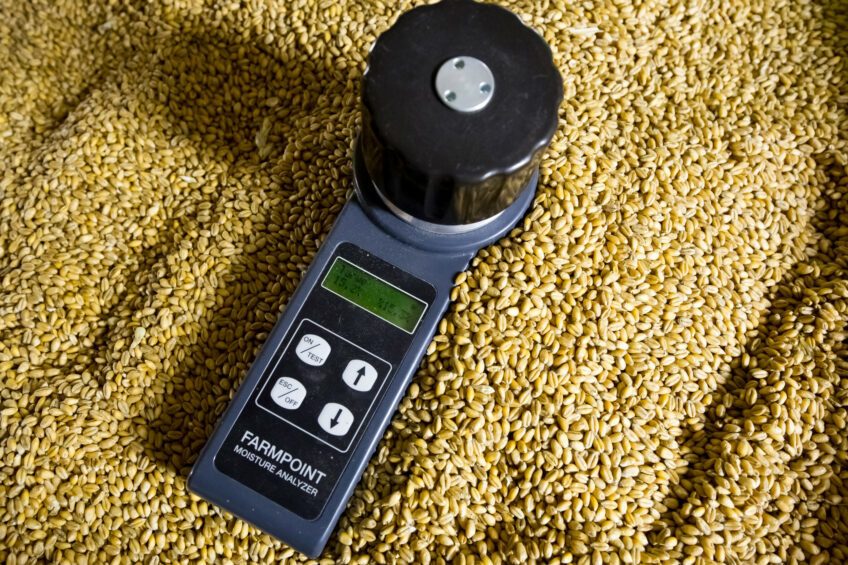How to manage and control the moisture content in feed?

Moisture management presents a critical challenge in feed production, impacting quality and shelf-life. Excess moisture can promote microbial growth, leading to spoilage and potential health hazards for animals. Fluctuations in moisture content can compromise feed consistency and nutritional integrity.
Moisture optimisation of feed refers to the process of managing and controlling the moisture content in animal feed to achieve desired nutritional and quality characteristics. Proper moisture levels are crucial in the production of animal feed because they can impact the feed’s shelf life, palatability, and overall nutritional value.

Here are some key aspects of moisture optimisation in feed
Nutrient stability: The moisture content of feed affects the stability of nutrients, including vitamins and minerals. Controlling moisture levels helps prevent the degradation of these essential components during storage and transportation.
Mould and microbial growth: Excess moisture in feed can create a favourable environment for the growth of moulds, bacteria, and other microorganisms. These contaminants can compromise the quality and safety of the feed, potentially leading to health issues in animals.
Pellet quality: In the production of pelleted or extruded feeds, maintaining the right moisture content is crucial for achieving proper pellet quality. The moisture content affects the binding and durability of the pellets, influencing their resistance to breakage and dustiness.
Storage stability: High moisture content in feed can lead to spoilage and deterioration during storage. It is important to optimise moisture levels to prevent caking, clumping, and the development of off-odours.
Palatability: Animals are sensitive to changes in the texture and taste of their feed. Optimising moisture levels can enhance palatability, making the feed more appealing to animals and encouraging proper consumption.
Feed processing efficiency: Moisture content can affect the efficiency of feed processing operations such as grinding, mixing, and pelleting. Proper moisture optimisation ensures that the feed processing equipment operates effectively and efficiently.
Cost considerations: Managing moisture in feed can also have economic implications. Optimising moisture levels helps avoid unnecessary weight and volume, reducing transportation costs. It can also contribute to improved feed conversion rates and overall animal performance.
To achieve moisture optimisation in feed, feed manufacturers may use various techniques such as drying, conditioning, and monitoring moisture levels throughout the production process. Regular testing and quality control measures are essential to ensure that the feed meets the required standards for nutritional content, safety, and overall quality.
Contribution to Feed Processing Efficiency
Grinding efficiency: The moisture content in feed can significantly impact the efficiency of the grinding process. Feed with optimal moisture levels allows for better particle size reduction during grinding, ensuring uniformity in particle size. This, in turn, enhances the overall surface area of the feed particles, promoting better digestibility and nutrient absorption in animals.
Mixing homogeneity: In the mixing stage of feed processing, proper moisture levels are crucial for achieving uniform distribution of ingredients. When feed ingredients have consistent moisture content, they are more likely to blend evenly, resulting in a homogeneous mixture. This contributes to the overall nutritional consistency of the feed, preventing issues such as nutrient segregation and ensuring that animals receive a balanced diet in every bite.
Pelleting and extrusion: Moisture optimisation plays a key role in the pelleting and extrusion processes, which are common methods for producing compound feeds. The presence of an appropriate moisture level facilitates the formation of durable and well-formed pellets. It improves the binding properties of the feed, allowing it to be processed more efficiently through pelleting or extrusion machinery. This contributes to the production of high-quality pellets with enhanced physical durability, reduced fines, and improved resistance to breakage during handling and transportation.
Energy efficiency: Maintaining the right moisture content in feed can lead to energy savings during the pelleting or extrusion process. Optimal moisture levels make the material more pliable, reducing the energy required for compression and shaping. This increased pliability can result in lower energy consumption and improved overall processing efficiency.
Cost considerations
Transportation costs: Excess moisture in feed adds unnecessary weight and volume, leading to increased transportation costs. By optimising moisture levels, feed manufacturers can reduce the overall weight of the transported product, potentially lowering transportation expenses. This becomes particularly significant when transporting feed over long distances.
Storage costs: High moisture content in feed can contribute to storage challenges such as caking, clumping, and mould growth. Proper moisture optimisation minimises the risk of these issues, reducing the need for specialised storage conditions and costly mitigation efforts. It also extends the shelf life of the feed, minimising losses due to spoilage.
Feed conversion rates: Feed with optimal moisture levels can positively impact feed conversion rates in animals. Improved palatability and digestibility of well-formulated, moisture-optimised feeds can result in better animal performance, including enhanced growth rates and feed efficiency. This, in turn, can lead to cost savings for producers, as animals utilise the nutrients in the feed more efficiently.
Processing costs: Efficient feed processing, facilitated by moisture optimisation, can contribute to cost savings in terms of energy consumption and machinery maintenance. Well-conditioned feed requires less energy during processing, leading to reduced operational costs. Additionally, the wear and tear on processing equipment are minimized when the feed is consistently processed under optimal moisture conditions.
Feed quality during storage
Animal feed, fish feed, and pet food must have precise control measures throughout the production. After many experiments, the Centre for Feed Technology (FôrTek) at the Norwegian University of Life Sciences (NMBU) can conclude that mould inhibitors like propionic acid and calcium propionate inhibit mould growth and maintain feed quality during storage.
Hygroscopic agents such as calcium chloride and glycerol absorb excess moisture and maintain optimal moisture levels, thus preserving feed quality and texture. These simple but important agents help to maintain optimal moisture levels in feed, preventing clumping, mould growth, and other forms of degradation, thus preserving feed quality and texture.
In summary, moisture optimisation in feed processing contributes to overall efficiency, improved product quality, and cost savings throughout the production, transportation, and storage stages of the feed supply chain. Feed manufacturers must carefully balance moisture levels to achieve these benefits while meeting the nutritional requirements of the target animal species.











